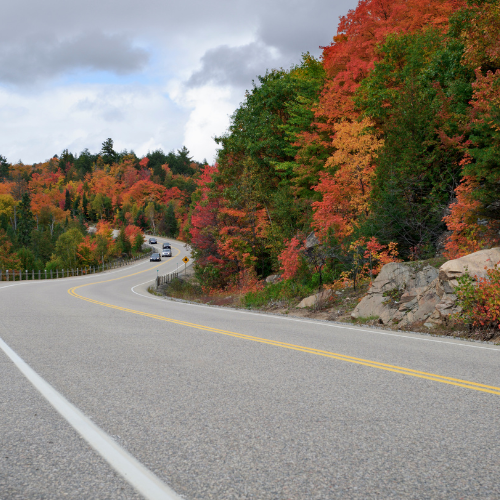
Fall is fast approaching. It’s one of the busiest seasons for commercial drivers, as stores are stocking up on goods for the winter months and holidays. Fall is also characterized by decreased daylight hours, increased wildlife on the road, and other driving challenges. To ensure employees protect themselves and others during this busy and potentially dangerous season, it’s crucial for organizations to encourage safe driving behaviors. Here are some best practices employers can share with their drivers this fall:
- Watch out for wildlife. Animals such as deer and elk are increasingly active in fall due to mating and migrating season. If drivers don’t remain attentive, particularly at dusk and dawn, these animals can cause serious or even fatal accidents. In fact, research from the Highway Data Loss Institute found that animal strike-related auto insurance claims peak at more than twice the annual average in the fall. To stay safe, drivers should watch for animal crossing signs and drive slowly in areas where wildlife may be active. If animals dart in front of drivers’ vehicles, they should brake firmly and stay in their respective lanes. Drivers should avoid swerving, as this can lead to more severe accidents.
- Take note of leaves on the road. Wet leaves can create slippery roads, increasing the odds of an accident. Leaves can also conceal potential hazards, such as potholes and frost. Considering these risks, drivers should reduce their speed when they notice leaves on the road and avoid driving through patches of them whenever possible.
- Plan for reduced daylight. In the fall, the days are shorter and the nights are longer, often leading to decreased road visibility and subsequent accident risks. These issues are compounded by daylight saving time (DST), which can throw off drivers’ internal clocks and elevate the likelihood of drowsy driving. According to a multidecade study conducted by the scientific journal Current Biology, fatal crash rates typically rise by 6% during the first week of DST. Therefore, it’s vital that drivers take precautions by getting plenty of rest in between shifts and ensuring their headlights are working properly before each trip. They should also increase their following distance and pass others slowly.
- Be wary of agricultural equipment. Fall is synonymous with the harvest season. As such, drivers will have to share the road with a range of heavy equipment, including tractors, combines, and trailers. To decrease the risk of accidents, drivers should give agricultural equipment ample space on the road. Even though this equipment often runs slowly, it’s important for drivers to be patient when passing these vehicles to avoid head-on collisions with other vehicles.
Contact us to see how you could minimize risk:
Recent News
Employee Spotlight: Eric Haberle
Please join us in welcoming Eric Haberle to Seubert’s Employee Benefits Department as a Sr. Benefits Account Manager!
Protecting Against Electrical Room Fires
Electrical rooms can pose significant fire risks if not properly designed, built and maintained. To protect people and property, it is essential for facilities to take targeted steps to mitigate these risks before they escalate.
Employee Spotlight: Natalie Meyer
Seubert welcomes Natalie Meyer to the agency’s Surety Department.
Cyber Hygiene Best Practices
As cyberattacks become more frequent and severe it is increasingly important for organizations to practice good cyber hygiene to minimize their exposure to risk.
The Impact of the Growing Gig Economy
The gig economy is a system in which organizations engage individuals, often through digital platforms or intermediaries, for temporary or task-based work, rather than relying solely on full- and part-time employees.
Employee Spotlight: Clark Rowley
Please help us welcome Clark Rowley to the Seubert Team as a Surety Support Specialist in our Surety Bond Division!

